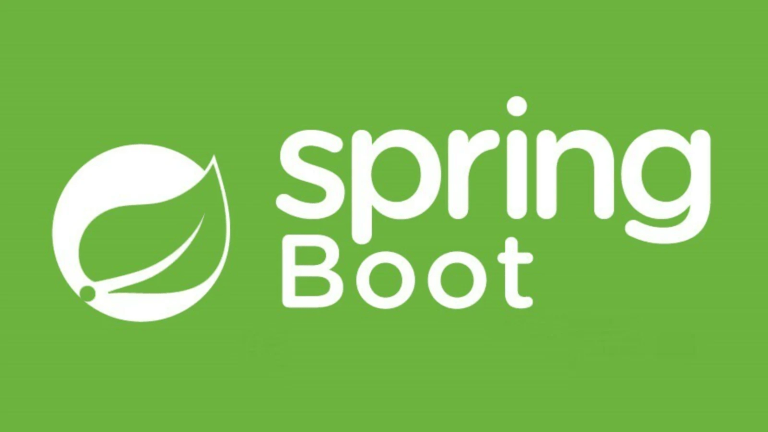Spring Boot Web Development Crash Course – REST APIs, Controllers, HTTP Methods & JSON Handling
Spring Boot has revolutionized web development, enabling developers to create robust and scalable applications with minimal setup. Its ability to streamline back-end development, support RESTful architectures, and handle JSON effortlessly has made it a preferred choice among developers in 2025.
This crash course will guide you through building RESTful APIs using Spring Boot. From understanding controllers to mastering essential HTTP methods (GET, POST, PUT, DELETE) and handling JSON data, we’ll provide you with all the tools and examples you need to enhance your back-end skills.
Table of Contents
- Why Spring Boot is Key to Web Development in 2025
- Understanding REST APIs in Spring Boot
- Building REST APIs with Spring Boot
1. Why Spring Boot is Key to Web Development in 2025
Spring Boot is an extension of the Spring Framework that simplifies the development of Java-based web applications. By leveraging pre-configured settings and automatic system setups, Spring Boot eliminates manual configurations and helps developers focus on creating impactful applications.
Why It Matters:
- Quick Setup: Spring Boot projects can be bootstrapped in minutes using Spring Initializr.
- RESTful API Support: Provides built-in support for designing REST APIs.
- Scalability: Easily handles small to enterprise-scale applications.
- JSON Handling: Effortlessly supports JSON serialization and deserialization, making API development faster.
With its rapid deployment capabilities and robust ecosystem of tools, learning Spring Boot is a must for developers aiming to create web applications in 2025.
2. Understanding REST APIs in Spring Boot
REST (Representational State Transfer) APIs allow communication between the server and client using standard HTTP methods. RESTful design principles favor simplicity, scalability, and flexibility, making it a popular choice for modern web applications.
Spring Boot simplifies REST API development by combining features like Spring MVC, JSON data handling, and embedded web servers like Tomcat.
Key Components of a REST API in Spring Boot include:
- Controllers: Handle incoming HTTP requests.
- HTTP Methods: Define operations (GET, POST, etc.) for interacting with resources.
- Model: Represents the data structure.
- JSON: The preferred data format for communication.
3. Building REST APIs with Spring Boot
Setting Up a Spring Boot Project
- Go to Spring Initializr.
- Configure your project:
- Project Type: Maven
- Dependencies: Spring Web
- Generate the project, download it, and import it into an IDE like IntelliJ IDEA or Eclipse.
- Run the application with:
mvn spring-boot:run
Your server will now be live at http://localhost:8080.
Creating a Controller
Controllers manage HTTP requests and link the front-end to the back-end logic.
Create a new UserController class:
@RestController
@RequestMapping("/api/users")
public class UserController {
@GetMapping
public String getAllUsers() {
return "Hello, this is the users endpoint!";
}
}Run the application. If you visit http://localhost:8080/api/users, the message Hello, this is the users endpoint! will appear.
4. HTTP Methods in Spring Boot
GET Method
The GET method retrieves data from the server.
Example – Fetch All Users:
@GetMapping
public List<String> getUsers() {
return List.of("Alice", "Bob", "Charlie");
}Visit http://localhost:8080/api/users, and it will return:
["Alice", "Bob", "Charlie"]
POST Method
The POST method sends new data to the server.
Example – Create a New User:
@PostMapping
public ResponseEntity<String> createUser(@RequestBody User user) {
return ResponseEntity.ok("User " + user.getName() + " created!");
}Sample Input (via Postman):
{
"name": "Alice"
}Response:
User Alice created!
PUT Method
The PUT method updates existing data on the server.
Example – Update a User:
@PutMapping("/{id}")
public ResponseEntity<String> updateUser(
@PathVariable Long id, @RequestBody User user) {
return ResponseEntity.ok("User with ID " + id + " updated!");
}DELETE Method
The DELETE method removes data from the server.
Example – Delete a User:
@DeleteMapping("/{id}")
public ResponseEntity<String> deleteUser(@PathVariable Long id) {
return ResponseEntity.ok("User with ID " + id + " deleted!");
}5. Handling JSON in Spring Boot
Spring Boot automatically handles JSON serialization (converting Java objects to JSON) and deserialization (JSON to Java objects).
Example Entity:
public class User {
private String name;
private String email;
// Constructors, getters, and setters
}By annotating controllers with @RequestBody, Spring Boot converts incoming JSON data into Java objects and vice versa for responses.
6. Tips for Mastering Spring Boot
- Understand Annotations: Learn the functions of
@RestController,@RequestMapping, and@RequestBody. - Leverage Tools: Use Postman or Swagger to test APIs.
- Error Handling: Implement global exception handling using
@ControllerAdvice. - Experiment with Real Projects: Build multi-endpoint APIs for hands-on experience.
7. FAQs About Spring Boot and REST APIs
1. Why is Spring Boot ideal for REST APIs?
Spring Boot simplifies configuration, supports default JSON handling, and is scalable for any project size.
2. Can Spring Boot handle large-scale systems?
Yes, it’s designed for scalability, enabling enterprise-grade applications with microservices architecture.
3. What other frameworks complement Spring Boot?
Spring Boot pairs well with React or Angular for front-end development.
Spring Boot is undeniably one of the most powerful frameworks for web development in 2025. Its ease of use, scalability, and robust support for REST APIs make it a must-learn tool for developers. Start building your first Spring Boot-based REST API today and unlock the potential of modern web application development!




